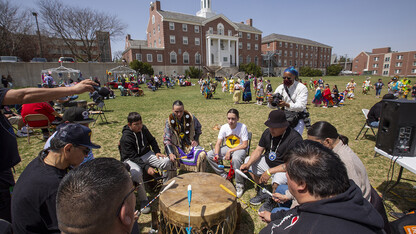· 2 min read
Great Plains Quarterly examines tough questions on Native genocide

Can the atrocities committed against Natives be called genocide? Is what happened to the indigenous people of North America the same as what happened during the Holocaust?
James Fenelon, Lakota-Dakota, director of the Center for Indigenous Studies at California State University, reviewed three books on this difficult question – “Native America and the Question of Genocide” by Alex Alvarez; “Ethnic Cleansing and the Indians: The Crime that Should Haunt America” by Glary Clayton Anderson; and “American Carnage: Wounded Knee, 1890” by Jerome Greene. He demonstrates how even within the academic community there are “competing definitions of genocide.”
“The question ‘Was it genocide?’ does indeed haunt many in academia, and should haunt mainstream America,” Fenelon writes, “but among Native peoples, with few exceptions, the answer is a settled and resounding ‘yes.’”
Felenon’s review essay, “The Haunting Question of Genocide in the Americas,” appears in the spring issue of Great Plains Quarterly, where he discusses U.S. Indian policy, disease, assimilation, the boarding school system and survivors’ grief.
Other articles in the issue (Volume 35, No. 2):
Historian Sara Gregg examines how the passage of the 1916 Federal Farm Loan Act affected agricultural credit and wartime production during World War I, which led directly to increased land use and later the Dust Bowl in “From Breadbasket to Dust Bowl: Rural Credit, the World War I Plow-Up and the Transformation of American Agriculture.”
In “Language as Immersion: The Blackfoot Mode of Experience in James Welch’s ‘Fools Crow,’” Ian Rogers reveals how the novel’s language “embodies a distinctly Native-American tone” and, through distinctive word choice, effectively evokes the pre-contact Blackfoot way of life.
Stephen A. Colston shares how Henry Wagner’s vast collection of books on the history of the American West and Colonial Mexico led him to write several important bibliographies on Western America still in use today in “ ‘Looked to Me Like a Good Investment’: The Evolution of Henry Wagner’s ‘The Plains and the Rockies’ and His Collection of Western Americana.”
Book reviews include topics of Native film, photographing the transcontinental railroad, George Catlin and more.
Great Plains Quarterly is an interdisciplinary academic journal published by the Center for Great Plains Studies at the University of Nebraska-Lincoln. The issue is available via the University of Nebraska Press as an individual copy or as a subscription or online via Project MUSE through participating university libraries. More information is available at http://www.unl.edu/plains.







